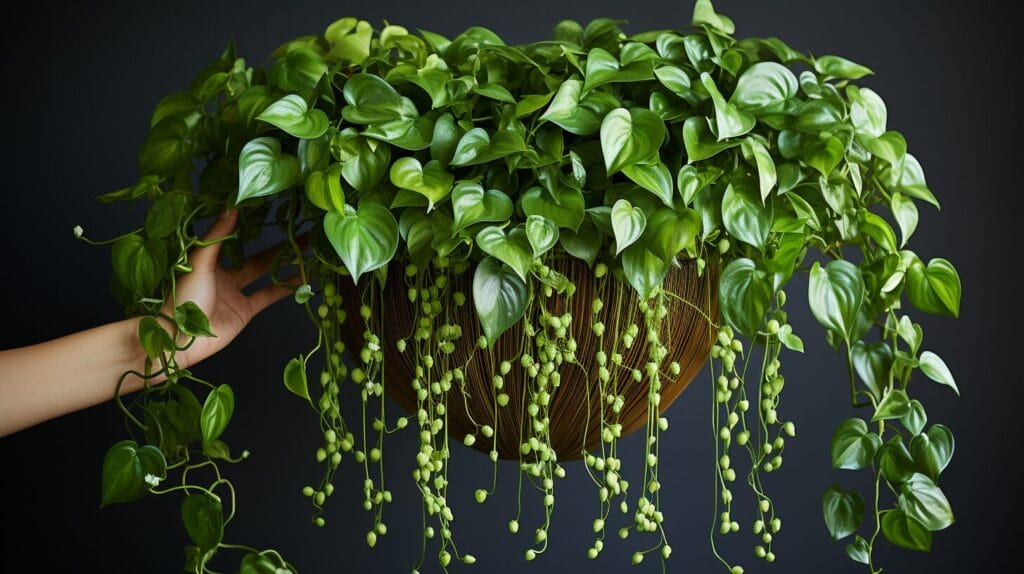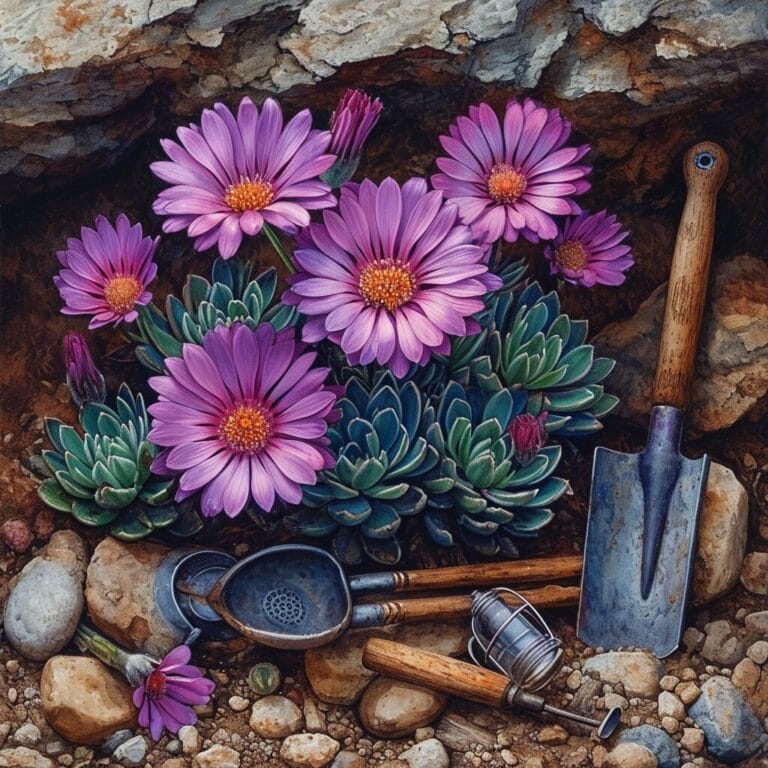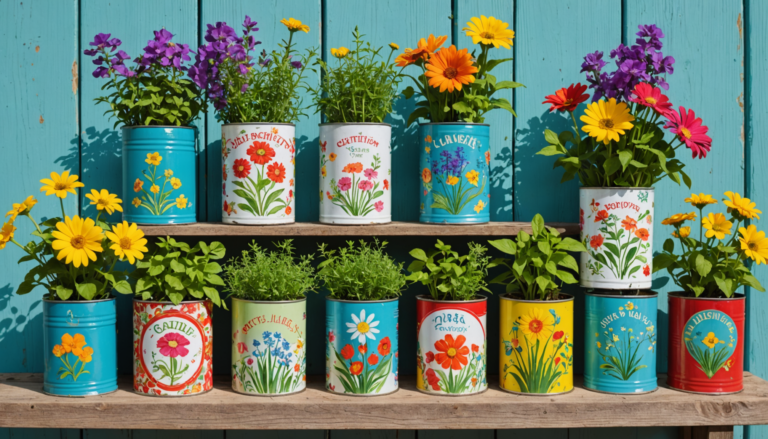Embark on a journey into the vibrant world of sprawling leaves, certain to discover the ideal vine plant to refresh your tranquil haven. Delve into the intricate universe of indoor vines, discovering variants that flourish not just in the warm, close-knit confines of your residence, but also inject it with a wave of invigorating freshness and a touch of nature’s sophistication.
Whether you’re drawn to the hardy heart-shaped leaves of the Hoya or the delicate watercolor splashes on a Marble Queen Pothos, this guide will navigate you through the nuances of nurturing these leafy companions. Get ready to transform your habitat with cascading greens that promise to enchant and oxygenate.
Key Takeaways
- Indoor vine plants can transform living spaces into verdant oases with minimal care requirements.
- These plants enhance any room with their climbing and trailing abilities while purifying the air and boosting mood.
- When choosing indoor vine plants, it’s important to consider factors like light, space, and humidity levels to match the plant with the environment.
- Different varieties of indoor vine plants offer unique features, such as attractive foliage, delightful scents, and adaptability to various light conditions.
All About the Wonderful World of Indoor Vine Plants
Indoor vine plants, ranging from the lush Pothos to the elegant English Ivy, can transform your living space into a verdant oasis with their cascading foliage and minimal care requirements. These vining houseplants are a perfect choice if you’re craving a touch of nature without the commitment of a high-maintenance garden. With their ability to climb and trail, they’re versatile décor elements that can enhance any room.
The beauty of a trailing houseplant lies in its simplicity; it’s an effortless way to add a dynamic visual element to your home:
- Creeping Fig or the Kangaroo Vine: can adapt to various light conditions and grow quickly, filling your space with greenery.
- Pothos, String of Pearls, and Inch Plant: excellent choices as they thrive in low light and require less attention. Each variety of indoor vine plants offers something unique. They are also perfect for those with busier lifestyles.
- Rex Begonia Vine or the Beetle Leaf Plant: boasts attractive foliage that can be a conversation starter. Others, such as the fragrant Jasmine or the Black-eyed Susan Vine, can infuse your rooms with a delightful scent.
Choosing the Best Indoor Vine for Your Space

Selecting the ideal vine plant for your home involves considering the light, space, and humidity levels of your intended area. You want your indoor vining plants to not only thrive but also complement your living space. It’s essential to match your plant choice with the environment you can provide.
Before you fall in love with a particular vine, think about the light conditions in your space.
- Make sure your room basks in bright, indirect light, or is it more of a low-light haven.
- Consider the available indoor space – have room for a larger, sprawling vine, or only a small nook that could be brightened with a hanging pot.
- Assess the humidity level – some vines adore a moist environment, while others prefer it dry.
- Choose plants that are easy to care for if you’re not keen on high-maintenance relationships.
Now, picture your indoor oasis with cascading green tendrils, evoking a serene and inviting atmosphere.
Caring For Your Indoor Vining Plants: Proven Tips and Techniques
Having chosen the perfect vine for your space, let’s explore the essential care practices to keep your plants healthy and flourishing. The right combination of light, water, and temperature is crucial for the success of your indoor vine.
Most vines thrive in the glow of indirect light, avoiding the harshness of direct sunlight, which can scorch their delicate leaves.
Here’s what you need to focus on:
- Watering: Overwatering is a common mistake. Wait until the top inch of soil is dry before giving your plant a drink to prevent root rot and keep the soil from becoming waterlogged.
- Pruning: To encourage lush growth and maintain shape, regular pruning is essential. Cut back any leggy stems, and don’t be afraid to remove yellow or dead leaves to keep your vine looking its best.
- Feeding: Every few months, feed your vine with a balanced liquid fertilizer to provide it with the nutrients it needs to grow strong and vibrant.
Check the leaves and stems for signs of pests or diseases between waterings, as these can quickly take a toll on indoor plants. Early detection and treatment will save you a lot of trouble down the road. Don’t forget that your vines will appreciate a bit of humidity, so a regular misting or a pebble tray with water underneath the pot can go a long way in mimicking their natural environment.
You’ve Got Heart: Dive Into the World of Heart Plants

Embrace the charm of heart-shaped foliage as we delve into the care and cultivation of heart plants, from the beloved Philodendron to the delicate String of Hearts. These enchanting indoor vining plants offer not just aesthetic appeal but also a heartwarming presence in your home:
- Philodendrons are known for their lush, heart-shaped leaves and are a favorite due to their adaptability and minimal care requirements. Keep them in medium to bright indirect light and allow the top inch of soil to dry out between waterings.
- The String of Hearts thrives in bright light but will tolerate lower light conditions. Its watering should be sparing, allowing the soil to dry out completely, as overwatering can lead to root rot.
Understanding the specific needs of your heart plant is key to ensuring it flourishes. Whether you’re drawn to the robust Philodendron or the graceful String of Hearts, both can add a touch of tenderness to your indoor space with their heart-shaped leaves.
Bringing Your Indoor Garden to Life: Hands-On Tips

To bring your indoor garden to life, start by choosing the right pots or hanging planters that provide ample space for your vine plants to flourish. When selecting the ideal home for your trailing plants, consider both aesthetics and growth potential. For example, if you are looking to showcase the beauty of flowering vine plants, opt for decorative ceramic pots or stylish macramé hanging planters. These will not only provide adequate room for root growth and circulation but will also enhance the overall look of your indoor garden. As your vine plants begin to grow, you can monitor their peony growth stages to ensure they are thriving and adjust their environment as needed.
Here are a few hands-on tips to help you care for your vine plants:
- Proper Plant Care: Follow general care guidelines, ensure consistent watering, provide adequate light, and prune regularly to keep your plants healthy.
- Ideal Placement: Find the right location for your plants to receive the appropriate amount of light, whether atop a bookshelf or in a cozy corner.
- Propagation: Don’t hesitate to propagate your vine plants from cuttings. It’s a simple, rewarding, and cost-effective way to expand your indoor garden.
Your indoor garden is a living piece of art, and with these tips, you’ll ensure your vine plants not only survive but truly thrive.
Conclusion
You’ve journeyed through the lush realms of indoor vines, from the resilient pothos to the charming string of pearls. Now, armed with the best care tips, you’re ready to transform your space into a green sanctuary. Embrace the tranquility and joy these hanging beauties bring. Go ahead, let your heart plants flourish and your indoor garden thrive. It’s time to revel in your slice of nature’s magic, right there in your home.
Frequently Asked Questions
Can I grow a string of hearts plant in a hanging pot indoors?
Absolutely! The string of hearts is a perfect indoor hanging plant, it can trail and grow long vines. It also does well in a hanging pot where its trailing vines can hang down beautifully.
What types of indoor hanging plants have flowers?
Some indoor hanging plants that produce flowers include the spider plant, the black-eyed Susan vine, and the wax plant. These flowering vines will make your indoor hanging plant look great.
How do succulents do as hanging indoor plants?
Succulents can do quite well as hanging indoor plants, especially the string of pearls variety. This succulent plant has a unique bead-like appearance and looks great in a hanging planter. Just ensure it gets plenty of light and water sparingly.
What’s a unique indoor hanging plant to try?
A: The Swiss cheese plant is a standout choice due to its unique, split leaves. Another unique option is the betel leaf plant, a tropical vine with elegant, heart-shaped green leaves.
Can I grow A flowering Plant with Hanging vines in a pot indoors?
Yes, flowering vines like the black-eyed Susan vine or the rex begonia vine can be grown in a hanging pot indoors. These plants have attractive foliage and tubular flowers which can add a lively touch to your space.







